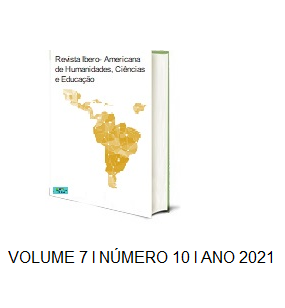IN NATURA FOOD CONSUMPTION BY PATIENTS WITH NON-TRANSMISSIBLE CHRONIC DISEASES OF THE ESTÁCIO DO RECIFE HEALTH CLINIC
DOI:
https://doi.org/10.51891/rease.v7i10.2682Keywords:
Natural foods. chronic non-communicable diseases. food consumption. risk factorsAbstract
Excessive consumption by the industrialized is one of the main causes of health problems. The use of these products is stimulated by practicality, low cost, large portions and the marketing of packaging and media. According to the Food Guide for the Brazilian Population, it is recommended that the ultra-processed and minimally processed consumption foods is having an adverse effect on culture, social life and the environment (WHO, 2014). The first step towards healthy eating is to make use of fresh or minimally processed foods based on food. That is why it is important to investigate the consumption of fresh food by individuals with CNCD. Objective: To investigate the consumption of fresh food in patients with chronic non-communicable diseases at the Estácio do Recife-PE health clinic. Method: This is a retrospective cross-sectional study, developed with patients from the Estácio do Recife health clinic, where the information oconsumption of fresh foods by these patients was collected through the clinic's attendance sheets. Results: Twenty patients of both sexes were evaluated, aged between 30 and 50 years, 75% (n = 15) were women and 25% (= 5) were men. Regarding the variables, it was possible to analyze that 65% (= 13) did not have diabetes, while 35% (n = 7) had the disease. In the SAH variable, it was observed that 65% (n = 13) had SAH, while 35% (n = 7) did not have the disease. Regarding cancer and obesity, there were results with low prevalence in the patients evaluated, 10% (n = 2) having and 90% (n = 18) not having the disease, while 5% (n = 1) have and 95% (n = 19) are not carriers respectively. In the consumption variables of fresh food, it was observed that 50% (n = 10) of patients frequently consume this type of food and the other 50% (N = 10) consume little. Conclusion: Through the research carried out it was possible to identify that the consumption frequent of fresh food by the patients with CNCD is only equivalent to half of the sample. Revealing that although the fresh and minimally processed foods consumption is the first step towards a healthy diet, the fruits and vegetables consumption is still relatively low. As this is a study with a small number of participants, based on their data, it is necessary to carry out new studies that identify the relationship between the consumption of fresh foods and those with CNCD.
Downloads
Downloads
Published
How to Cite
Issue
Section
Categories
License
Atribuição CC BY

